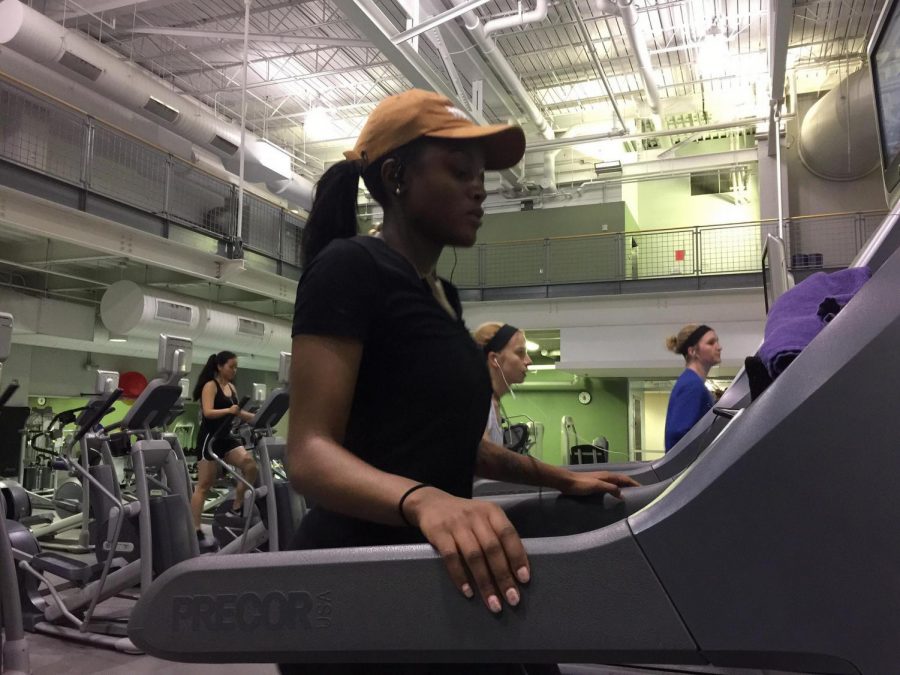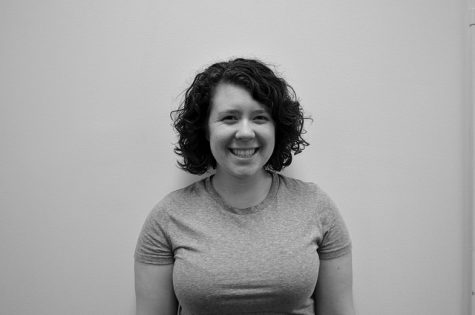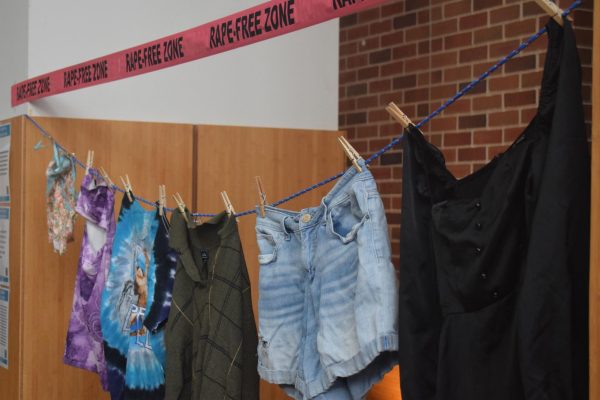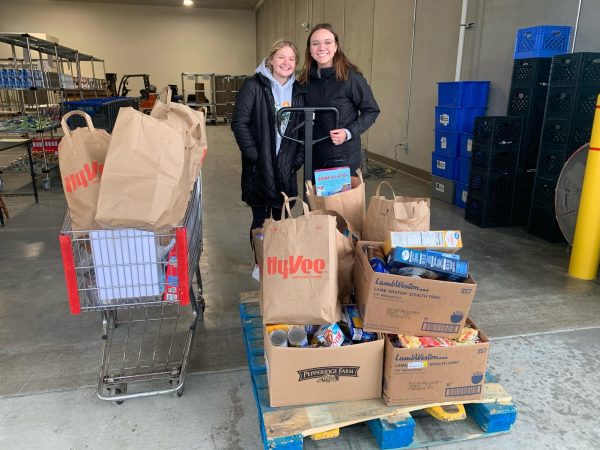Students share New Year’s resolutions
Sophomore Katia Rose enjoys working out in the IWC because she wants to be healthy and aware of how she treats her body.
January 17, 2018
New Year’s Resolutions are commonly created among Americans to change for the better in the new year. All though these goals are intended to continue all year, they rarely make it through the first two months or reach the success rates that are hoped for.
According to the Huffington Post, the six most common resolutions include losing weight, getting organized, learning how to say “no,” travelling more, spending more time with family and
friends and learning a new skill or taking up a new hobby.
While investigating common resolutions on campus, a theme started to appear with the goal of “becoming healthier.” While this was common, students interpreted this in different ways. For example, Jenna Grochow, a junior mass communications major, has a goal to drink more water.
“I am trying to focus more on maintaining a healthy lifestyle while being a college student and drinking more water is a big factor with that for me,” Grochow said.
Other similar resolutions included drinking less soda, going to the gym more, eating healthier and getting more sleep.
Students have multiple resources on campus to help them reach these goals. The Integrated Wellness Complex (IWC) has a fitness center that encompasses a weight room, a basketball court, work out equipment and a track, as well as peer health advocates and professional staff to help students learn about how to become healthier.
Kate Noelke, the director of integrated wellness, shared what the IWC contains and the resources that students should utilize.
“The people in the IWC are by far the greatest asset that is available to our students. Most people just walk through, but engaging in even a short one-on-one or small group session can ensure that students know the full-spectrum of what is available for many different well-practices, and some best practices and suggestions,” Noelke said. “We have student workers, peer health advocates, professional staff and volunteers who are all interested in helping students achieve their best selves. Come talk to us and we can help design a program to explore, engage and practice wellness across all dimensions.”
Noelke also encourages students to connect with those who work in the IWC to help learn other ways to be well, including self-care, merging into supporting healthy relationships and working towards working policies and procedures that “contribute to a thriving culture of health at Winona State and in the greater Winona community.”
“We are here to help students with personal well-practice, and to help them engage in experiences that will contribute to skills and knowledge needed to achieve academic success and a fulfilling job after graduation,” Noelke said.
Eric Weigel, the associate director of strength and conditioning/fitness, works with the athletic teams, the operating duties of running the fitness center and occasionally teach labs for the Health, Exercise and Rehabilitative Sciences department.
Weigel shared several ideas when striving to become healthier, including consciously thinking about being healthy.
“When grocery shopping, try to eat food that is located on the outer edges of the store,” Weigel said. “It is also important to get in a disciplined routine of exercising at least 30 minutes three times a week.”
Weigel also encouraged students to work out with a friend to push each other in workouts and hold each other accountable. The fitness center also offers personal trainers and a new app called BetterYou that contains pre-made workout programs, healthy recipes and other features to keep students going in the right direction with their healthier habits.
Winona State has our own dietician, Sarah Nicklay, that works with Chartwells and works with students with allergies and special diets. She also helps create the menu cycle in the cafeterias and does counseling for students interested in eating healthier, fueling for sports and other items like that.
When asked about eating healthier on campus, Nicklay provided insight in what students should do to begin these new habits.
“Eating healthy on campus is definitely possible. Try to make your plate look like MyPlate with half of your plate of fruits and vegetables and half a sensible portion of lean proteins whole grains, and low-fat dairy,” Nicklay said. “It can be challenging not to indulge at an all-you-care-to-eat dining hall, so start off at the salad bar of the kitchen where there are lots of vegetable options.”
Nicklay encourages students to check the ID cards in front of the items for nutrition information and look for the balanced icon to identify healthy options. The complete nutrition information and ingredients are also on the dineoncampus website and app.
“Off campus some quick, easy meal options include stir fry, chili, stews, whole wheat pasta with veggies, lean ground beef or turkey, marinara sauce, eggs or frittata, tuna salad, baked chicken, baked potatoes or sweet potatoes; there are really lots of options,” Nicklay said. “I add veggies to pretty much anything I make. Frozen vegetables are great because they’re just as nutritious as fresh, they’re more affordable and the prep work is already done.”
Healthy snack options that Nicklay encourages includes anything with fruits or vegetables. If you need a little more, some great options are veggies and dip, fruit, smoothies, granola bars, string cheese, yogurt, cottage cheese, half sandwiches, trail mix (watch the portion size), light popcorn and more.
Kate Hansen, the health and wellness promotions coordinator at Winona State is in charge of the health services websites, as well as planning for Wellness Wednesdays that are most Wednesdays in the WELL at 3 p.m.
Hansen also shared the throughout January, there is a “Wellness Challenge” in the IWC for students to monitor their behaviors.
While encouraging students to gain new, healthy habits of working out, Hansen said that it was important to do regular and easy exercises during the day as study breaks. She also shared that the best way to make a habit stick, was to start on Monday and to continue to track yourself and your progress, because it takes three weeks in order for a new habit to stick.
The best way to create a new goal, according to Hansen, is to create an easy, specific, realistic and timely goal that can be measured and tracked to see the progress.
For students that would like to become healthier and find that some of these tips would be helpful, all of the interviewees are willing to meet with students and help them through a new workout regime.







































































